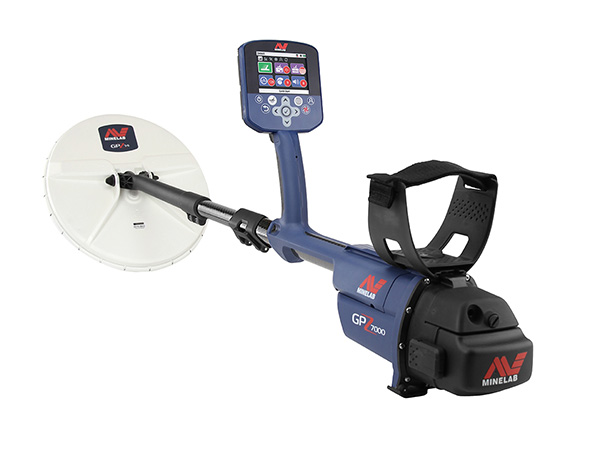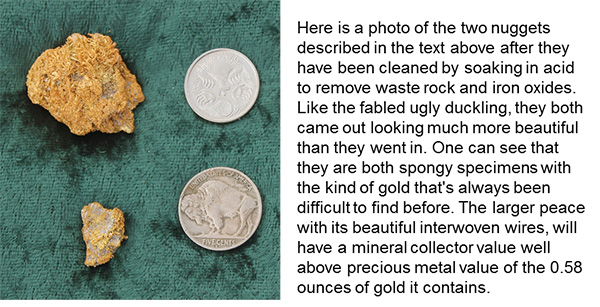Recently, I had the opportunity to test Minelab’s new flagship detector, the GPZ 7000 and found it to be an amazing piece of equipment. Earlier in the summer I had been successfully using both my GPX 5000 and Minelab’s new SDC 2300. Both of these detectors have their strengths and are great at finding gold, but in many ways the new GPZ 7000 is like swinging both the GPX and the SDC 2300 at the same time, only better. I found the GPZ 7000 to be surprisingly sensitive to small gold much like the SDC 2300, yet retaining all the depth, power and punch of the GPX 5000 on larger and deeper nuggets, with even greater depth on the largest chunks of gold.

The first nugget I found with the new GPZ 7000 was a piece of specimen gold with more than 1/10 of an ounce of contained gold. This nugget was found in a California Mother lode patch that had been pounded by everyone and his brother over and over again. I even went thoroughly over this area myself with my GPX 5000 using both large and small coils. Everyone had missed this nice piece of gold but the GPZ 7000 found it straight away – right out in the open in the middle of the patch. It was about 8 inches deep and yet this spongy piece of specimen gold gave a very plain and obvious – though not loud – signal. I was very impressed how easily the GPZ 7000 could produce a nice nugget out of a well hammered patch.
Later in my testing of the new GPZ 7000, I dug a 0,64 ounce (20 gram) nugget out in the gold fields of Nevada. What was truly surprising is that this was not a solid chunk of gold, but a nest of small wires heavily coated in iron oxides. It was dug at an amazing depth of 18 inches or about 45 cm. I would not have been all that surprised if it were a solid nugget at that depth, but this specimen is a nest of little wires about 1 to 2 mm in length separated with iron oxides.

There is no other hand held detector currently on the market that could have detected that specimen at that depth; I really don't think anything but the GPZ 7000 could have found it.
This is because the eddy currents which are created in porous, mossy or wiry pieces of gold decay and disappear much more quickly than those which are created in solid pieces of gold of the same weight. It’s like comparing the detector response on a fine jewelry chain with that of a solid gold ring - even though they may both weigh the same, the ring will sound off much, much stronger than the chain, which may not respond at all, depending on the detector and how small the chain links are.
I found the GPZ 7000 to be an amazingly sensitive gold detecting machine, and the new detector technology this machine is built on certainly has advanced the ability of the prospector to find gold that was never detectable before. I'm quite sure that soon after its release here in the US, prospectors will be pulling new gold out of both well worked patches and new locations as well, achieving a depth and sensitivity that just hasn't been possible before now. I know that I will be a part of that, and as soon as the weather warms up a bit here in my part of the country I will be out with my GPZ 7000 digging gold that just couldn't be seen or reached with older machines.




















Comments
To make comments you must be logged in, please note comments will not display immediately due to moderation